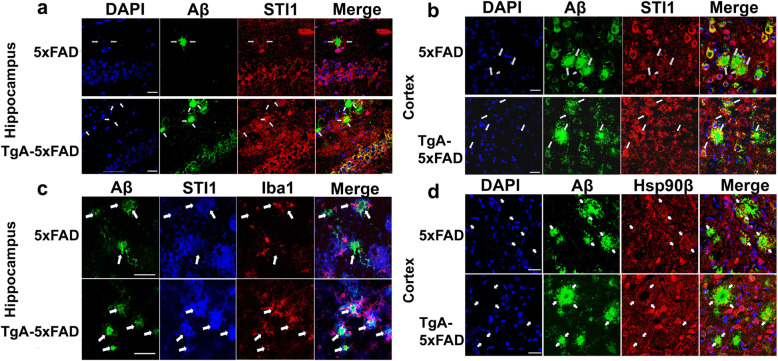Fig. 7.
Extracellular STI1 deposits are found in dense core and neuritic plaques in 5xFAD mice. a Representative confocal images (63X magnification) of Aβ (anti-6E10, green), STI1 (red) and nuclei labelled with DAPI (blue) in the CA1 region of the hippocampus of 3–5-month old male 5xFAD and TgA-5xFAD mice. Images are Z-stack projections composed of images including Aβ plaques. White arrows indicate areas where extracellular STI1 is visualized within the Aβ deposits around the core of the plaque. Scale bars = 25 μm. b Aβ plaques and STI1 immunolabelling in the cortex of 3–5-month old 5xFAD and TgA-5xFAD male mice. Scale bars = 25 μm. c Aβ (6E10, green), STI1 (blue) and Iba1 microglial marker (red) labelling in the subiculum of 3–5-month old male 5xFAD and TgA-5xFAD mice. White arrows indicate areas where extracellular STI1 is visualized within the Aβ deposits around the core of the plaque. d Representative images of tissue labelled with DAPI (blue) Aβ (6E10, green), Hsp90β (red) in the cortex of 3–5-month old male 5xFAD and TgA-5xFAD mice. White arrowheads indicate areas where extracellular Hsp90β deposits are colocalizing within plaques. Three-four sagittal sections from at least three 5xFAD or TgA-5xFAD mice were used for all immunostaining experiments. Scale bars = 25 μm

